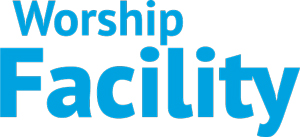Facial recognition and behavioral identification technology have long been the stuff of movies and police dramas like “CSI”, but recently they’ve made their way into software packages aimed at the workplace and houses of worship. To some this seems scary, to others it seems like a major benefit. Church security expert and Worship Facility editorial advisor Bobby Brasher says the truth lies somewhere in between.
“Facial recognition software can do a lot,” he says. “If your church has cameras, and you have security software that includes facial recognition, let’s say someone on your staff has a restraining order on someone, or there’s a problem with one of the parents of one of the kids at your church school. You know that person should not be around. You can upload a picture of that problem person to the program, and if they show up the security camera captures their face and an alert goes out that this person is on premises and you have a potential situation. It’s very helpful.”
Technology and human limitations
Brasher’s example is a clear case of technology doing what it has been intended to do since the dawn of time – overcoming human limitations. Humans are fallible. If your entire security protocol relies on church staff being vigilant, there’s only so much they can do to observe the grounds, every entrance, every visitor on-site, and every staff member, attendee, and student. Cameras are a great help, but who’s watching what the cameras are showing you? Do you have a security person on-site monitoring the feed 24 hours a day, 7 days a week, or are you simply recording what has happened to provide evidence in case an unfortunate event occurs?
Security software takes the next step, artificially monitoring what’s happening and identifying at least known risks around the clock in ways that a human monitor can’t. People blink, get bored, sneeze, sip coffee, and nod off, all creating lapses of attention that computers and cameras don’t have. However, they’re not always right.
Human judgment and training are key
At the same time, machines aren’t infallible. How many times have you tried to feed a dollar into a vending machine or an automated checkout at a store, only to have it rejected because it’s too wrinkled, or has a minor tear, or for no apparent reason at all? How about the automated system when you’re calling any number of banks or utilities? You think you’re speaking clearly, everyone around you can hear and understand what you’re saying, but the computer you’re talking to says it can’t understand you, or it thinks you said something else. Those are just two common, inconvenient examples. Now apply those errors to a safety scenario. You can’t afford to let software alone decide what to do in the event of a threat.
“You always need training,” Brasher says. “You need a team who knows what to do, exercising their judgment. The cameras and software can identify when something may not be right, but people in your parking lot, greeters at your door, people on your staff need to be able to determine what action needs to be taken.”
With behavioral analysis software, cameras capture images of people in and around your facility and create an alert when someone is behaving in a way that may be suspicious. This is training that church leadership should already be providing to their staff, identifying when someone is lingering around the children’s area perhaps, or wearing too much clothing in warm weather. But the most effective way of handling a situation is still the combination of people and machines. Machines alert people to potential problems they may not have noticed, and people sort the fact and make determinations based on what they know about the situation.

